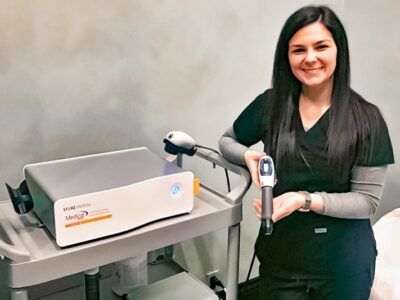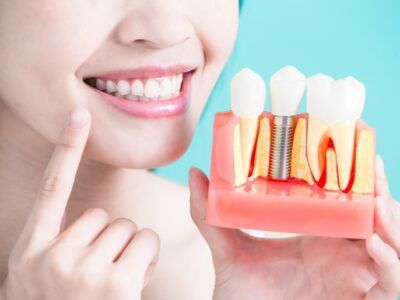Many individuals aspire to achieve a perfectly contoured jawline to enhance their facial symmetry and appearance. Non-surgical jaw reduction techniques provide effective, minimally invasive options that require little recovery time and carry fewer risks than surgery. This guide covers the most popular jaw reduction methods, how they work, and what to expect from these treatments.
What Are the Most Popular Non-Surgical Treatments for Jaw Reduction?
Botulinum toxin (BTX) and injectable fillers are popular non-surgical options for jaw reduction, known for providing effective results with minimal downtime and lower risks compared to surgery.
BTX is a neurotoxin that temporarily relaxes the masseter muscles, responsible for chewing. By reducing the activity of these muscles, BTX can effectively slim down a square or overly pronounced jawline, resulting in a more oval and feminine appearance.
While commonly used to enhance various facial features, fillers can also be strategically injected to soften and contour the jawline. Fillers can create a more balanced and proportionate jawline, especially when used alongside BTX. These treatments are highly customizable, allowing practitioners to tailor them to achieve subtle refinements or more dramatic transformations based on individual preferences.
How Does BTX Work for Jaw Reduction?
BTX for jaw reduction targets the masseter muscles, which can enlarge from teeth grinding or chewing tough foods. Injecting BTX relaxes these muscles, gradually reducing their size over time.
Process
The procedure is relatively quick, often taking less than 30 minutes. A series of small injections are administered directly into the masseter muscles. Patients typically notice a slimming effect within a few weeks as the muscles relax and atrophy.
Results
Results from BTX treatment usually become visible within two to four weeks and can last for three to six months. Regular treatments are recommended to maintain the desired jawline shape, making BTX an excellent option for those seeking a less invasive alternative with minimal discomfort and no downtime.
Key Differences Between Surgical and Non-Surgical Jaw Reduction Options
Surgical and non-surgical jaw reduction both aim to reduce jawline size but differ significantly in methods and results:
- Surgical Jaw Reduction: This invasive method reshapes or removes bone for permanent changes. It requires general anesthesia, longer recovery, and carries higher risks.
- Non-Surgical Jaw Reduction: Treatments like BTX and fillers reduce muscle size and contour the jaw through injections. These options are less risky, involve no downtime, and provide temporary results. The choice depends on personal goals, the degree of jawline prominence, and the willingness to undergo surgery.
Impact on Facial Symmetry and Overall Appearance
Facial symmetry is important for attractiveness, and a defined jawline plays a key role in achieving balance. Jaw reduction treatments can improve symmetry by slimming the jawline, resulting in a more balanced facial structure. A softer jawline also enhances contours, emphasizing features like the cheekbones and chin.
Potential Risks and Side Effects
While non-surgical jaw reduction treatments are generally safe, they can have some risks and side effects:
- BTX Risks: Common side effects include temporary bruising, swelling, or discomfort at the injection site. In rare cases, patients may experience asymmetry or difficulty chewing if nearby muscles are affected.
- Filler Risks: Injectable fillers may cause swelling, bruising, or redness at the injection site. There’s also a risk of lumps or unevenness if not properly administered. It’s essential to choose a qualified practitioner to minimize risks and ensure the best results.
Determining Candidacy for Jaw Reduction Procedures
A thorough consultation with a qualified practitioner is essential to determine candidacy for jaw reduction. Ideal candidates typically include:
- Individuals with a Square Jawline: Those with a naturally square or wide jawline due to enlarged masseter muscles often benefit from BTX.
- Patients Seeking Non-Invasive Options: Those wishing to avoid surgery and its associated risks may prefer non-surgical treatments.
- People with Bruxism: Individuals who grind their teeth can benefit from BTX to reduce muscle activity and prevent further enlargement.
Recovery Process After Jaw Reduction Treatment
A significant advantage of non-surgical jaw reduction is minimal recovery time:
Most patients can return to daily activities right away, although some may experience mild swelling or bruising that resolves within a few days.
BTX Aftercare: Avoid massaging the treated area and intense exercise for the first 24 hours to prevent migration of the BTX.
Filler Aftercare: Patients should limit facial movement and sleep with their heads elevated to reduce swelling. Overall, recovery is quick and easy, making non-surgical jaw reduction ideal for those with busy lives.
Injectable Treatments vs. Traditional Surgery
Injectable treatments like BTX and fillers have several advantages over traditional surgery:
- Less Invasive: They don’t require incisions or significant downtime, making them safer for many patients.
- Reversible Results: Unlike surgery, the effects are temporary, allowing for adjustments or discontinuation if needed.
- Lower Risk: Injectable treatments have fewer risks and side effects, making them generally safer and more predictable.
Benefits of Jaw Reduction Treatment:
- Enhanced Facial Harmony: These treatments create a more symmetrical facial structure, improving overall attractiveness.
- Improved Self-Confidence: A well-defined jawline can boost self-esteem and confidence.
- Non-Invasive and Convenient: With minimal recovery time, non-surgical jaw reduction is a quick and effective option.
In conclusion, jaw reduction treatments offer a versatile and effective means to achieve a sculpted jawline. Whether through BTX, fillers, or a combination of both, these non-surgical options provide a safe and customizable approach to enhancing facial contours and boosting confidence.













Comments